Ancient City Of Timgad: Largest Roman Settlement Ever Built In North Africa
A. Sutherland - AncientPages.com - The great ancient city of Timgad is the largest Roman settlement ever built in North Africa.
In AD 100, Emperor Trajan created the city on the northern slopes of the Aures Massif, approximately 170 km south of the Mediterranean coast.
Arch of Trajan in Timgad. Image credit: alioueche mokhtar - CC BY-SA 4.0
The city's ancient name was Thamugadi. Its still impressive ruins are located at the intersection of six roads, it served as a Roman military garrison town, and its plan, laid out with great precision, illustrates the skills of Roman urban planners. The outpost, established on a perfectly square grid, had to control one of the passes through the Aures Mountains to the Sahara.
The town soon outgrew its original plan, and additional structures were added outside the grid. Timgad - inhabited mainly by Roman veterans - was a peaceful town for several hundred years.
From the 3rd century, it became a center of Christian activity. The city was walled but not fortified. Initially designed for around 15,000, the city quickly outgrew its original specifications and spilled beyond the orthogonal grid in a more loosely organized fashion.
Buildings constructed entirely of stone were frequently restored during the Empire's time. In Timgad, only Roman citizens could live comfortable lives. However, the Romans knew they had to do much more in the area and not only for the Empire's citizens.
Timgad - Current situation at the excavation site. Image credit: Zenstar - CC BY-SA 4.0
The locals' resistance was strong, but the Romans managed to cope with the troublesome tribes by attracting these people to Timgad's buildings built entirely of stone, and the town had a much better social life than the surroundings.
They also offered suitable places to develop the commerce of local products. Soon, many natives joined the Roman Legion for a 25-year term to obtain Roman citizenship for themselves and their sons.
Pax Romana, a 200-Year-Long Period Of Stability within the Roman Empire, helped Timgad to become an attractive settlement. In just 50 years after Timgad's foundation, indigenous people mainly inhabited the city.
Timgad Was A Strong And Thriving Colony
The city's rapid growth occurred by the middle of the 2nd century. In several quarters, there were many temples, markets, baths, and Capitolium.
Timgad . Detail of the arch, east side with niche architecture. Image credit: Bachounda - CC BY-SA 3.0
Most of these buildings date from the Severan period (193 and 235 AD); it was a prosperous time when the city enjoyed its Golden Age, also attested by immense private residences.
Buildings constructed entirely of stone were frequently restored during the Empire: the Trajan Arch in the middle of the 2nd century, the Eastern gate in 146, and the Western gate under Emperor Marcus-Aurelius.
Timgad's underground reservoir collected water for the bathhouses, pools, and fountains, and there was also modern drainage, sewage system, and luxuries such as lavatories that could be heated during winter.
Timgad's theatre, a library, and a forum delivered many entertainments. People enjoyed fountains and bathhouses with walls and floors decorated with beautiful mosaics displaying pagan mythological scenes. Today, the city's marketplace, the so-called Timgadu Bazaar with benches and stone tables, is considered much better preserved than in other Roman cities.
Timgad Arch And Library With 3,000 Scrolls
One of the impressive ancient structures was the triumphal arch. The Arch of Trajan ( partially restored in 1900), also known as the Timgad Arch, was built with three arches and mainly of sandstone.
It remains unknown when the Library at Timgad was built, but it is known that it was a gift to the Roman people by Julius Quintianus Flavius Rogatianus.
Timgad - ruins. Three-quarter view of the west side. Image credit: Zinou2go - CC BY-SA 3.0
The library is a one-story building with niches for scrolls and cabinets containing a book warehouse. Initially, it occupied a rectangular area (eighty-one feet (24.69 meters long by seventy-seven feet (23.47 meters) wide. Once, it was a fully developed library system indicating the people's high standard of learning and culture. It is believed that it could have stored 3,000 scrolls.
In the city, the ruins of a huge amphitheater, sixty meters in diameter and able to accommodate 4,000 spectators, have been preserved.
The Destruction Of Timgad
Timgad was a celebrated bishopric during the Christian period, but the Vandal invasion of 430 destroyed the city's prosperity. Finally, the Arab invasion left Timgad totally destroyed. After the 8th century, the city ceased to be inhabited.
Written by – A. Sutherland - AncientPages.com Senior Staff Writer
Updated on November 16, 2023
Copyright © AncientPages.com All rights reserved. This material may not be published, broadcast, rewritten or redistributed in whole or part without the express written permission of AncientPages.com
Expand for referencesMore From Ancient Pages
-
 The Four Bases Of Anti-Science Beliefs – What Can Be Done About Them?
News | Jul 14, 2022
The Four Bases Of Anti-Science Beliefs – What Can Be Done About Them?
News | Jul 14, 2022 -
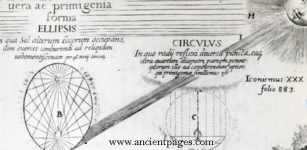 Shining Ones, Archimedes Death Ray And Mystery Of Vitrified Forts In Scotland
Ancient Technology | May 13, 2015
Shining Ones, Archimedes Death Ray And Mystery Of Vitrified Forts In Scotland
Ancient Technology | May 13, 2015 -
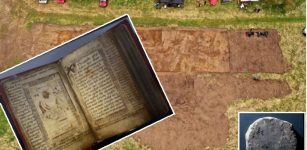 Archaeologists Discover Long-Lost Scottish Monastery Of Deer And Solve An Old Manuscript Mystery
Archaeology | Nov 21, 2023
Archaeologists Discover Long-Lost Scottish Monastery Of Deer And Solve An Old Manuscript Mystery
Archaeology | Nov 21, 2023 -
 On This Day In History: Anne Boleyn, The Second Wife Of Henry VIII – Beheaded For Adultery, Treason And Incest – On May 19, 1536
News | May 19, 2016
On This Day In History: Anne Boleyn, The Second Wife Of Henry VIII – Beheaded For Adultery, Treason And Incest – On May 19, 1536
News | May 19, 2016 -
 Ancient Chinese Ingenuity Created Sophisticated Time Keeping Machines: Proof Of Remarkable Ancient Knowledge
Ancient Technology | Jan 14, 2019
Ancient Chinese Ingenuity Created Sophisticated Time Keeping Machines: Proof Of Remarkable Ancient Knowledge
Ancient Technology | Jan 14, 2019 -
 What Caused The Unexplained Change In Europeans’ DNA 4000-5000 Years Ago? Scientists Say The Genetic Turnover Remains A Mystery
Archaeology | Aug 27, 2014
What Caused The Unexplained Change In Europeans’ DNA 4000-5000 Years Ago? Scientists Say The Genetic Turnover Remains A Mystery
Archaeology | Aug 27, 2014 -
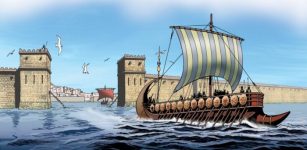 Phoenicians: Powerful Traders And Their Remarkable Seafaring Achievements
Civilizations | Jan 4, 2021
Phoenicians: Powerful Traders And Their Remarkable Seafaring Achievements
Civilizations | Jan 4, 2021 -
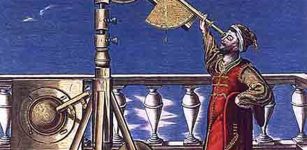 Eclipse Was A Bad Omen, A Sign Of Gloom And Doom In Ancient Peoples’ Beliefs
Featured Stories | Sep 25, 2015
Eclipse Was A Bad Omen, A Sign Of Gloom And Doom In Ancient Peoples’ Beliefs
Featured Stories | Sep 25, 2015 -
 Cuchulainn: Irish Mythical Hero And His Cruel Magical Spear Gae Bolg
Celtic Mythology | Jun 6, 2017
Cuchulainn: Irish Mythical Hero And His Cruel Magical Spear Gae Bolg
Celtic Mythology | Jun 6, 2017 -
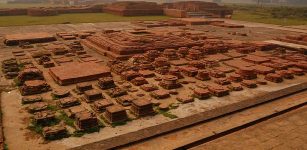 Vikramashila: India’s Main Intellectual And Learning Center Of Tantric Buddhism
News | Sep 19, 2015
Vikramashila: India’s Main Intellectual And Learning Center Of Tantric Buddhism
News | Sep 19, 2015 -
 Immigrants In Prehispanic Cancun Were Treated Just Like Maya Locals
Archaeology | Oct 26, 2023
Immigrants In Prehispanic Cancun Were Treated Just Like Maya Locals
Archaeology | Oct 26, 2023 -
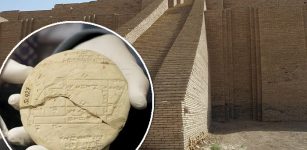 Discovered 3,700-Year-Old Clay Tablet Shows Babylonians Used Geometry Long Before Pythagoras
Archaeology | Aug 4, 2021
Discovered 3,700-Year-Old Clay Tablet Shows Babylonians Used Geometry Long Before Pythagoras
Archaeology | Aug 4, 2021 -
 Megalith Tombs Were Family Graves In Stone Age Europe
Archaeology | Apr 15, 2019
Megalith Tombs Were Family Graves In Stone Age Europe
Archaeology | Apr 15, 2019 -
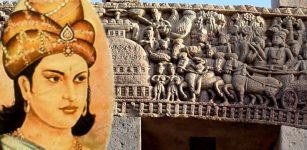 How Great Emperor Ashoka Realized And Showed All Living Beings Matter
Featured Stories | Mar 4, 2021
How Great Emperor Ashoka Realized And Showed All Living Beings Matter
Featured Stories | Mar 4, 2021 -
 Mysterious Biblical Celestial City And Its Connection To The North Star – The Arrival – Part 2
Biblical Mysteries | Feb 26, 2021
Mysterious Biblical Celestial City And Its Connection To The North Star – The Arrival – Part 2
Biblical Mysteries | Feb 26, 2021 -
 Unravelling The Mystery Of Apollonius Of Tyana – Was He A Superhuman?
Featured Stories | Sep 17, 2015
Unravelling The Mystery Of Apollonius Of Tyana – Was He A Superhuman?
Featured Stories | Sep 17, 2015 -
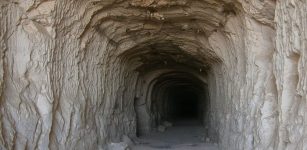 Ancient Superhighways: 12,000-Year-Old Massive Underground Tunnels From Scotland To Turkey
Featured Stories | Jul 19, 2015
Ancient Superhighways: 12,000-Year-Old Massive Underground Tunnels From Scotland To Turkey
Featured Stories | Jul 19, 2015 -
 Strangest Maps Ever Created – You Have Never Seen Our World Like This!
Featured Stories | May 18, 2022
Strangest Maps Ever Created – You Have Never Seen Our World Like This!
Featured Stories | May 18, 2022 -
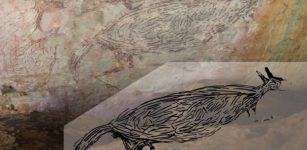 Australia’s Two-Meter-Long And Oldest Known Rock Painting Of A Kangaroo – Revealed
News | Feb 23, 2021
Australia’s Two-Meter-Long And Oldest Known Rock Painting Of A Kangaroo – Revealed
News | Feb 23, 2021 -
 On This Day In History: Albert Einstein Publishes His General Theory Of Relativity – On Mar 20, 1916
News | Mar 20, 2017
On This Day In History: Albert Einstein Publishes His General Theory Of Relativity – On Mar 20, 1916
News | Mar 20, 2017




